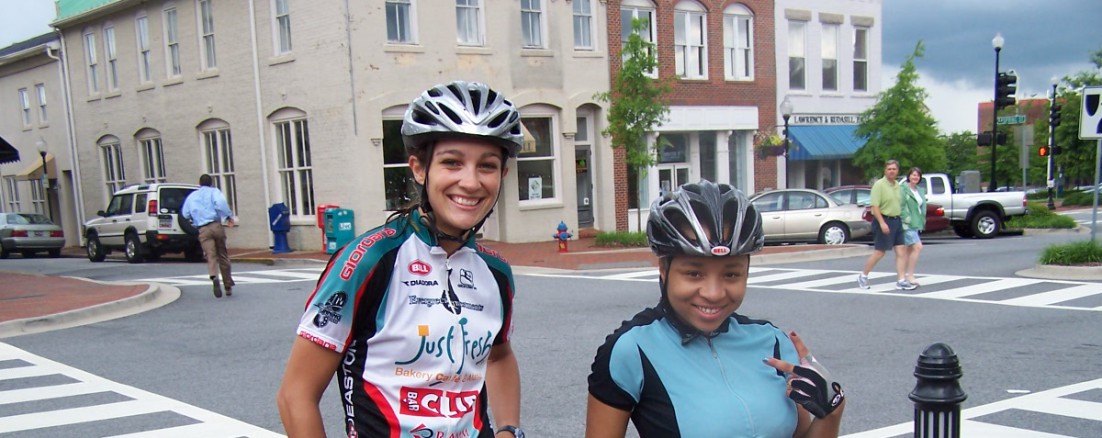Action Steps
Health
Contribute to public health by providing active living environments with safe, connected, accessible facilities along with programs that encourage walking and bicycling.
| ID | Recommended Action Step Idea | Lead Agency | Agency Partner(s) | Chapter Ref. |
|---|---|---|---|---|
| Health: Engagement/encouragement of non-traditional groups | ||||
| H1 | Update NCDOT planning guides and/or checklists during planning processes (e.g. CTPs) to prioritize inclusion of low-income, people of color, older adults, youth, people with disabilities. Seek transportation equity for lower-income communities. | Update NCDOT planning guides and/or checklists during planning | 9.4 | |
| H2 | Reach out to other organizations, including non-profits, to identify appropriate ways to boost resident engagement in transportation planning. | NCDOT | NC Center for Non-Profits | 9.4 |
| H3 | Convene annual pedestrian summit with broad engagement of non-traditional groups/organizations. | BikeWalkNC | Volunteers (municipal planners) | 9.4 |
| H4 | Continue annual bicycle summit and expand broad engagement of non-traditional groups/organizations. | BikeWalkNC | Volunteers (municipal planners) | 9.4 |
| H5 | Establish user on-line system and other networks to educate non-traditional groups about transportation issues. | NCDOT, DHHS | BikeWalkNC | 9.4 |
| H6 | Conduct targeted social media, advertisements, marketing campaigns and/or other promotional efforts to increase active transportation. | NCDOT, DHHS | BikeWalkNC | 9.4 |
| H7 | Work with non-traditional organizations, e.g. El Pueblo, NAACP, NC Alliance of Disability Advocates, to identify the most effective and appropriate messages to encourage increased active transportation among low-income, people of color, youth, older adults, people with disabilities. | NCDOT, DHHS | BikeWalkNC | 9.4 |
| H8 | Develop a focused outreach approach to increase bicycling among women and girls. | NCDOT, DHHS | BikeWalkNC | 9.4 |
| Health: Institutionalization of health professionals/advocates into transportation planning processes | ||||
| H9 | Encourage health professionals to participate in the transportation planning and project scoping projects. | NCDOT | 9.4 | |
| H10 | Provide training and materials to local health directors and boards of health regarding transportation planning. | DHHS | 9.4 | |
| Health: Community Leader outreach | ||||
| H11 | Develop educational materials for local leaders, elected officials and boards/commissions regarding the benefits of active transportation and informational materials on transportation planning and implementation. | NCDOT, DHHS | 9.4 | |
| H12 | Work through state councils and organizations to reinforce (to local leaders and officials) the importance of health considerations in local planning, e.g. NC League of Municipalities, NC Association of County Commissioners. | NCDOT | 9.4 | |
| Health: Data | ||||
| H13 | Prepare health data sets and reports that can be used in transportation planning, implementation and performance evaluation. | DHHS, NC State Center for Health Statistics | 9.4 | |
| H14 | Develop prioritiztion criteria that can be easily and objectively rated to indicate transportation projects that are likely to serve low-income, people of color, youth, older adults, and people with disabilities. | NCDOT, DHHS | 5, 9.4 | |
| H15 | Include health/equity criteria in project prioritization. | NCDOT, DHHS | 5, 9.4 | |
| H16 | Adopt high-priority performance measures described in Chapter 8. | NCDOT, DHHS | 8 | |
| H17 | Identify and implement the collection of new indicators for ongoing surveillance, such as children walking to school, active commuters, etc. for measuring performance. | NCDOT, DHHS | 9.4 | |
| H18 | Provide funding, resources and tools for local communities to collect longitudinal data (i.e. measuring the economic and health impacts) before and after pedestrian and bicycling projects are implemented. | NCDOT, DHHS | 9.4 | |
| Health: Planning and Programs | ||||
| H19 | Follow new NCDOT Public Health Policy adopted October 4, 2012. | NCDOT | 9.4 | |
| H20 | Create health factor requirements that are appropriately scaled to project or plan size. | NCDOT | ITRE; DHHS; Active Living by Design | 5 |
| H21 | Create an incentives structure for comprehensive planning that includes health component and improves land use to reduce distances between important destinations. | NCDOT | Local governments, MPOs/RPOs | 5, 9.4 |
| H22 | Collaborate to incorporate more local school officials into transportation planning efforts. | NCDOT, DPI | 9.4 | |
| H23 | Engage vast network of possible non-profit partners in North Carolina, many of which support healthy living. | NC Center for Non-Profits | NCDOT-DBPT, Healthy Environments Collaborative | |
| H24 | Maintain and establish new education, encouragement, and enforcement programs recommended in Chapter 7. | NCDOT-DBPT | BikeWalkNC, advocacy groups, MPOs/RPOs, municipalities, Healthy Environments Collaborative | 7 |





